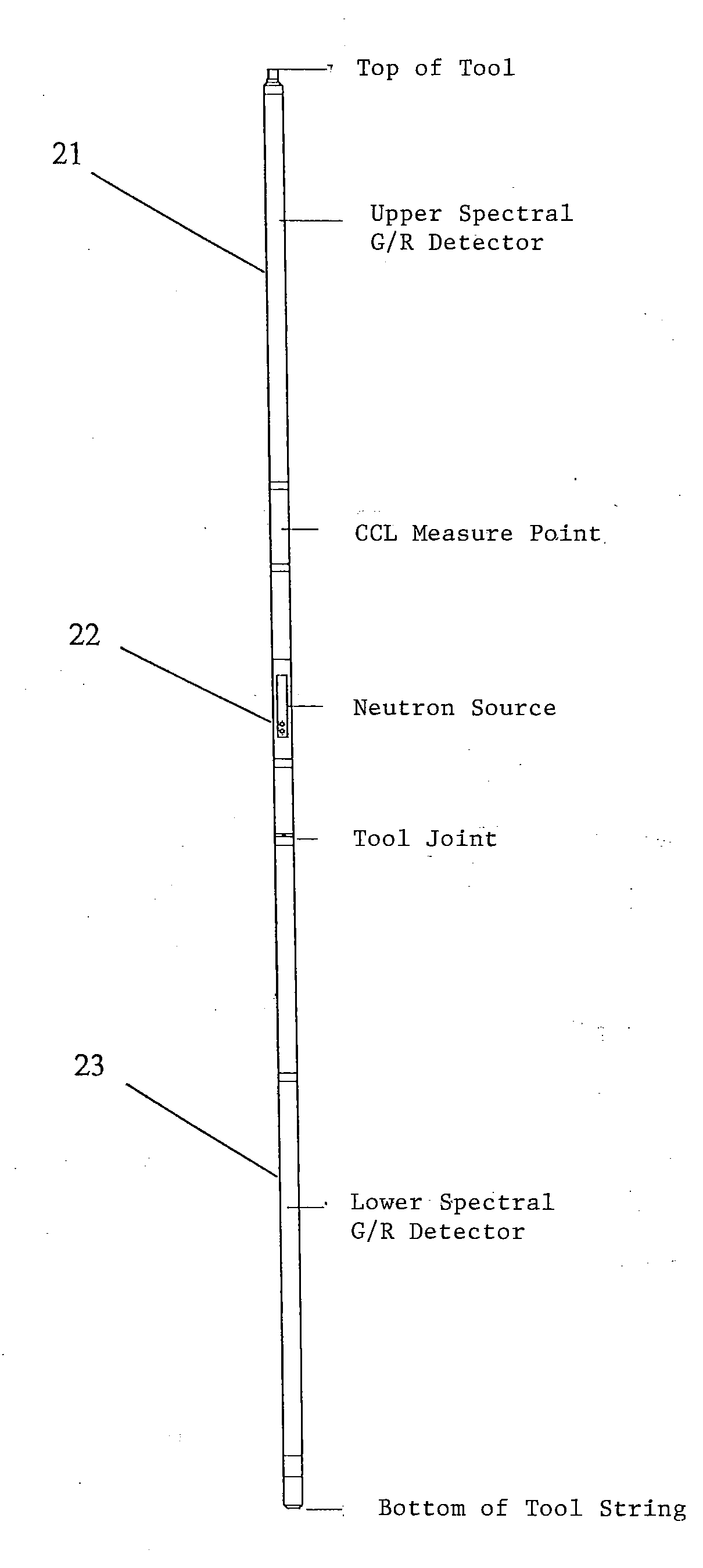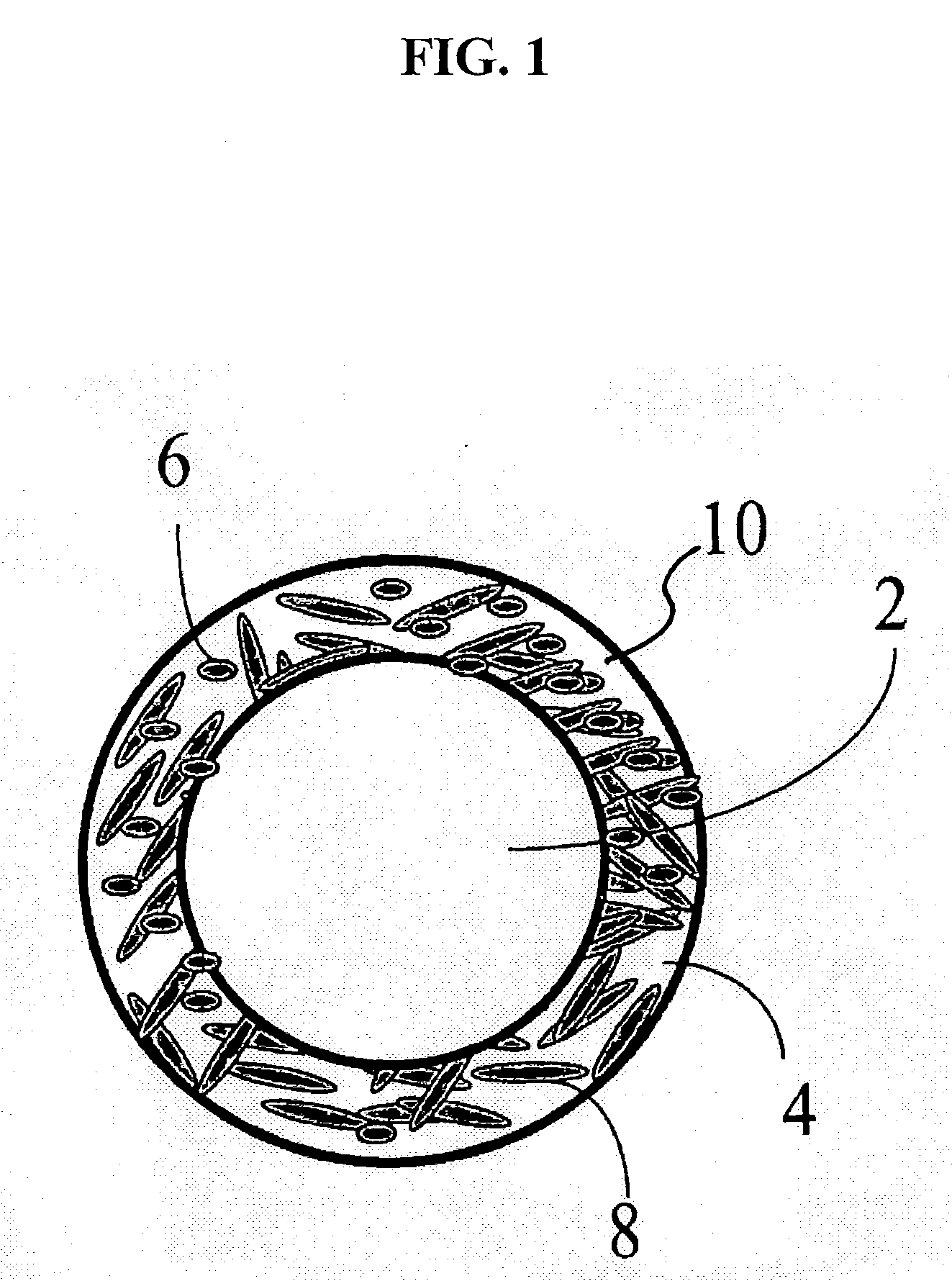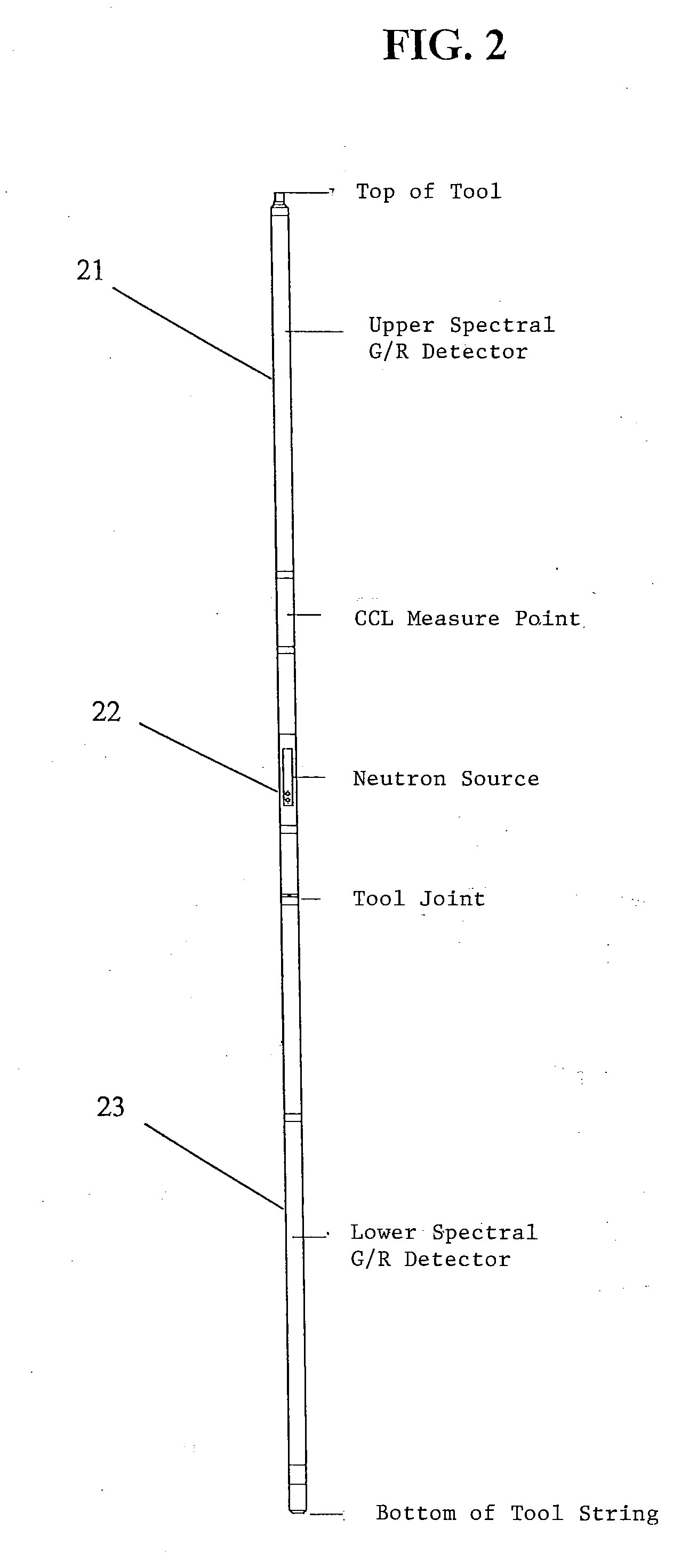Method and tool for determination of fracture geometry in subterranean formations based on in-situ neutron activation analysis
a technology of neutron activation analysis and fracture geometry, which is applied in the direction of instruments, surveying, and well accessories, etc., can solve the problems of adding operation costs, wasting materials used to maintain fractures after fluid pressure reduction, and expensive to efficiently operate wells
- Summary
- Abstract
- Description
- Claims
- Application Information
AI Technical Summary
Benefits of technology
Problems solved by technology
Method used
Image
Examples
Embodiment Construction
[0021]In accordance with the present invention, a method for determining fracture geometry uses environmentally friendly materials. These environmentally friendly materials are nonradioactive until bombarded by neutrons and will be referred to as radiation susceptible materials. In one embodiment, the method involves determining the geometry (i.e. aspects of proppant packed height and width) of a fracture created in a formation using target elements that comprise the radiation susceptible materials. The radiation susceptible materials have a short half-life, which advantageously permits them to be used in a formation while at the same time minimizing any adverse environmental impact, either from handling or having the proppant flow back out of the well either during clean-up or when the well is put back on production.
[0022]Radiation susceptible materials as defined herein are those that become radioactive upon bombardment by neutrons. The radiation susceptible materials can advantag...
PUM
 Login to View More
Login to View More Abstract
Description
Claims
Application Information
 Login to View More
Login to View More - R&D
- Intellectual Property
- Life Sciences
- Materials
- Tech Scout
- Unparalleled Data Quality
- Higher Quality Content
- 60% Fewer Hallucinations
Browse by: Latest US Patents, China's latest patents, Technical Efficacy Thesaurus, Application Domain, Technology Topic, Popular Technical Reports.
© 2025 PatSnap. All rights reserved.Legal|Privacy policy|Modern Slavery Act Transparency Statement|Sitemap|About US| Contact US: help@patsnap.com



